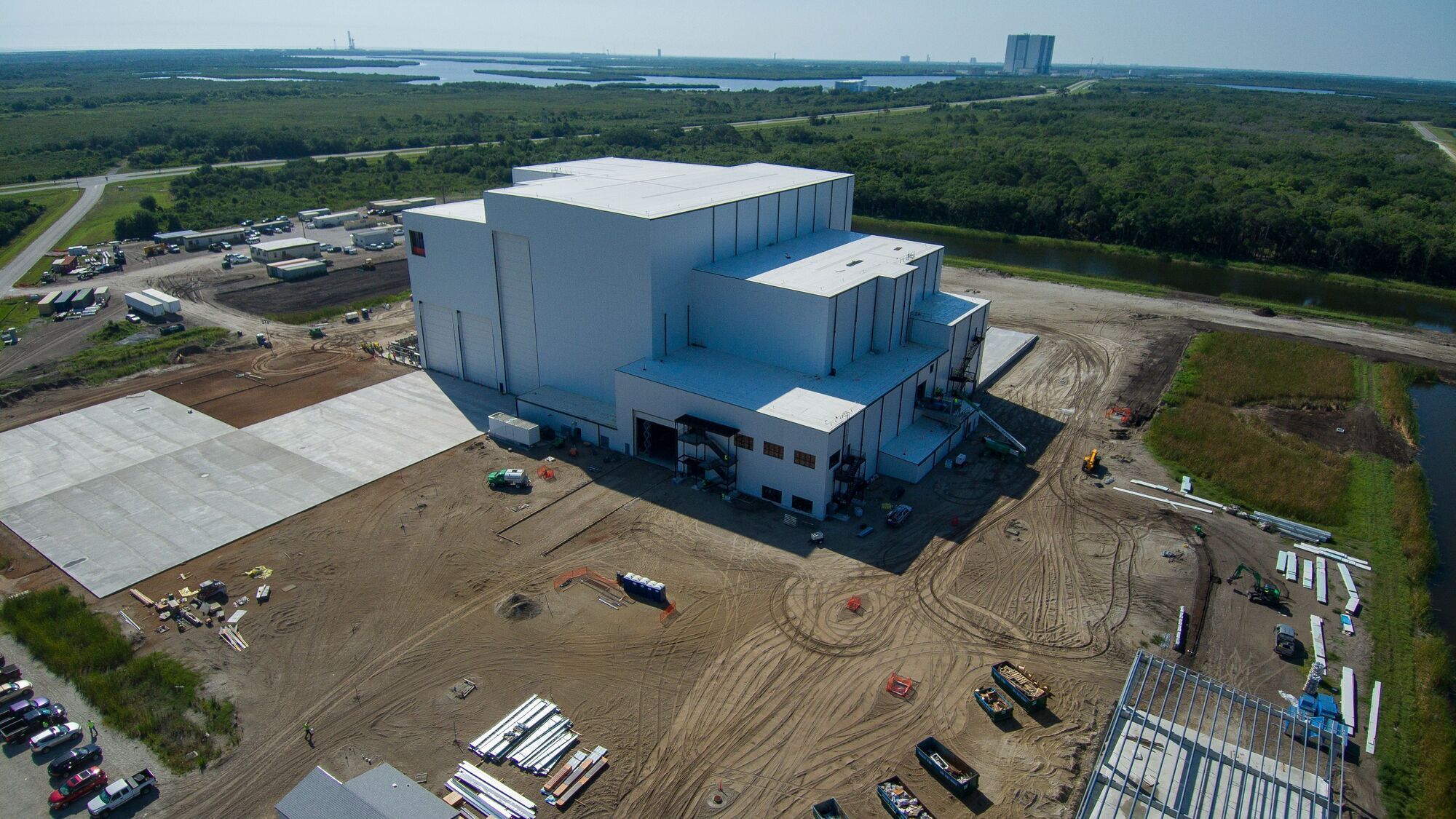TAMPA, Fla. — Amazon is investing $19.5 million to expand its satellite processing facility at NASA’s Kennedy Space Center, Florida, to mitigate delays in deploying its 3,200-strong Project Kuiper broadband constellation.
The company said Aug. 22 the investment will support a secondary, 3,900-square-meter support facility at the site, which would help accelerate launch cadence amid a looming regulatory deadline to deploy half the constellation by July 2026.
The building would join a 9,300-square-meter satellite processing facility Amazon announced last year at Kennedy’s runway-equipped Launch and Landing Facility, bringing total investment in the site to nearly $140 million.
Space Florida, an economic development agency, has agreed to reimburse Amazon for up to $3.2 million in construction costs.
Amazon said in a blog post that it expects construction for the second facility to be completed in early 2025.
An Amazon spokesperson said building the primary payload facility remains on track to finish this year.
The company would use the two buildings to store and perform final preparations for satellites produced from its manufacturing hub in Kirkland, Washington, which opened in April.
The Kirkland factory is designed to produce five satellites per day at peak capacity, and most of them would be sent to Florida to launch “dozens” at a time.
Avoiding delays
In June, Amazon said its first batch of production Project Kuiper satellites are set to launch from Florida on an Atlas V rocket from United Launch Alliance (ULA) in the last three months of this year.
The company, which had planned to deploy these satellites in the first half of 2024 after its two prototypes aced in-orbit tests, said the delay pushed initial services into the next year.
Amazon has bought eight Atlas Vs from ULA and 38 of its next-generation Vulcan Centaur rockets as part of a multibillion-dollar launch roster that also includes 18 Ariane 6 rockets from Arianespace, up to 27 New Glenn missions from Blue Origin and three SpaceX Falcon 9s.
Unlike the rest, Ariane 6 would use Arianespace’s facilities at the Guiana Space Center in French Guiana to launch Project Kuiper satellites.
Europe’s next-generation launcher reached orbit July 9 during its long-awaited inaugural flight, but experienced an issue with the power unit needed to reignite its upper stage. Still, Arianespace aims to fly Ariane 6 again later this year in a mission for a military satellite.
New Glenn recently suffered two mishaps involving its first stage, Bloomberg reported Aug. 21, although it is unclear whether they affected plans for its maiden flight this fall.
Vulcan has not flown since its maiden mission in January. ULA plans to fly an inert payload on its second Vulcan in September, following delays with Sierra Space’s Dream Chaser cargo spaceplane, and has two national security missions booked for the rocket by the end of this year.
The next Vulcan launch after that is scheduled late in the first quarter of 2025 for an undisclosed payload.
ULA used Atlas V to launch Amazon’s two Project Kuiper prototypes last year, but had previously planned to use Vulcan’s debut flight before switching rockets to avoid further delays.
At one point, Amazon had aimed to fly its test satellites in 2022 with rocket developer ABL Space Systems.
Amazon is investing in infrastructure and service upgrades at Cape Canaveral as part of its launch agreement with ULA, including a second vertical integration facility (VIF) dedicated to Project Kuiper missions.
Construction for the second VIF, dubbed VIF-A, is slated to be completed in early 2025, enabling ULA to prepare for two Vulcan missions simultaneously.
Amazon has outlined around $10 billion in overall investment to get Project Kuiper off the ground.
Under deployment rules tied to Amazon’s Federal Communications Commission license, the company must deploy all the constellation’s satellites in low Earth orbit by July 2029.
Related
Read the original article here
